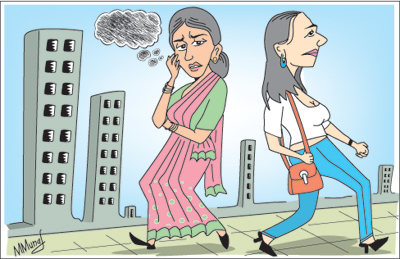Changing core beliefs
There are two therapies scientifically proven to be effective for depression. They are cognitive behaviour therapy (CBT) and interpersonal therapy (IPT). As far I know there are no practitioners of IPT in Sri Lanka and therefore I will not describe this therapy.
The older therapy is CBT and its two pioneers are Aaron Beck and Albert Ellis. The older is Albert Ellis a psychologist who passed away in 2007 at the age of 94. Aaron Beck is a psychiatrist who is 92 and still working and writing. Albert Ellis is the father of Rational Emotive Behaviour Therapy (REBT) a form of CBT.

REBT originally called Rational Emotive Therapy (RET) has its beginnings in the ancient philosophical tradition of stoicism. The famous stoic Epictetus, in the first century A.D. wrote in the Enchiridion: “Men are disturbed not by things, but by the views which they take of them.” William Shakespeare, writing many centuries later, rephrased this thought in Hamlet: “There’s nothing good or bad but thinking makes it so”. In the books of Proverbs in the Old Testament of the Bible it says, “For as he thinks within himself, so is he”.
The most basic premise of REBT (which it shares with CBT) is that, what people believe about situations they face – not the situations themselves – determine how they feel and behave.
REBT also says that a person’s biology or inheritance may also determine how they think and behave limiting a person’s ability to change. Ellis called his model of REBT the ABC model. ‘A’ stands for activating event or adversity. It refers to the aspect of a situation that troubles a person most. It may be an actual event or an inference about an event or an aspect of the event. This inference can be accurate or inaccurate. ‘B’ stands for beliefs. These can be rigid or flexible, extreme or non-extreme, general or specific. ‘C’ stands for consequences. These are the emotional, behavioural, and cognitive consequences of the person’s beliefs about A.
Let us see an example as to how this model works. A woman prone to depression meets an old friend on the street. The friend appears not to notice her and passes by. This activating event leads the woman to infer that her friend saw but deliberately ignored her. This inference leads to the belief that because the friend ignored her she must be unworthy as a friend and therefore also unworthy as a person. This belief leads to the emotional consequence of depression and perhaps the behavioural consequence of avoiding people in general.
Ellis argued irrational beliefs lie at the heart of people’s emotional problems which are brought on by life’s adversities. Of these irrational beliefs the most important are rigid beliefs in the form of musts, shoulds and have-to’s. In his book “The Essence of Rational Emotive Therapy” he listed some of these rigid beliefs or rules of life.
1. It is a dire necessity for adults to be loved by significant others for almost everything they do.
2. Certain acts are awful or wicked, and people who perform such acts should be severely damned.
3. It is horrible when things are not the way we like them.
4. Human misery is invariably externally caused and is forced on us by outside people and events.
5. If something is or may be dangerous or fearsome we should be terribly upset and endlessly obsess about it.
6. It is easier to avoid than to face life’s difficulties and self-responsibilities.
7. We absolutely need something other stronger or greater than ourselves on which to rely.
8. We should be thoroughly competent, intelligent, and achieving in all possible respects.
9. Because something once strongly affected our life, it should indefinitely affect it.
10. We must have certain and perfect control over things.
11. Human happiness can be achieved by inertia and inaction.
12. We have virtually no control over our emotions and we cannot help feeling disturbed about things.
Looking at this list most people would realise that they have held one or more of these ideas even temporarily. How do we go about changing our beliefs? According to REBT theory change is possible at different levels.
For example if you feel anxious about somebody important in your life being disapproving of you, you can feel better by altering your body chemistry, by exercise, meditation or medicines such as anxiolytics. You can also try and change the situation by avoiding meeting the person. Another way would be to change your thoughts about the situation by thinking that the person will not disapprove after all. But such strategies only help a person to feel better.
To actually get better as Ellis would put it, a more fundamental change has to occur in your core beliefs. This would help you face a range of difficult situations rather than one particular situation. In the example above rather than simply believing that disapproval might not occur, you can accept that even if there is disapproval it would not matter too much to you or your life. Thereby you change your core belief that approval is a necessity of life and that you must never receive disapproval.
Changing such core beliefs is the main technique of REBT.
(Next month Prof. Hanwella will discuss CBT)



